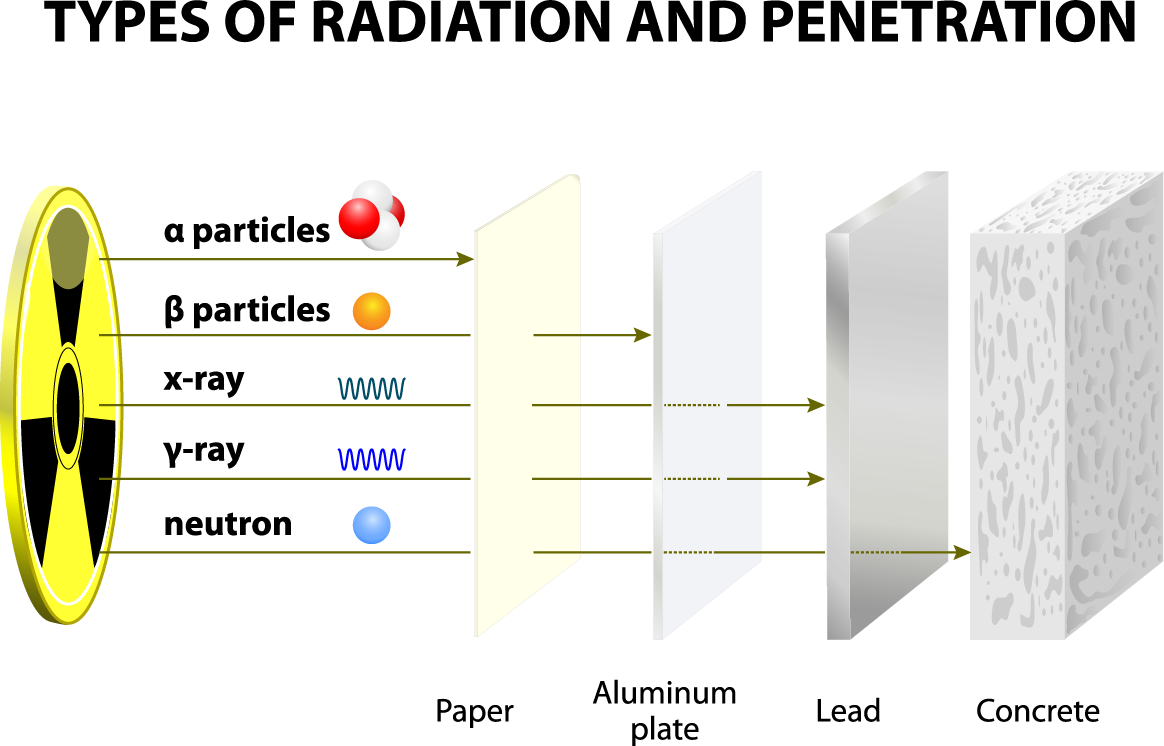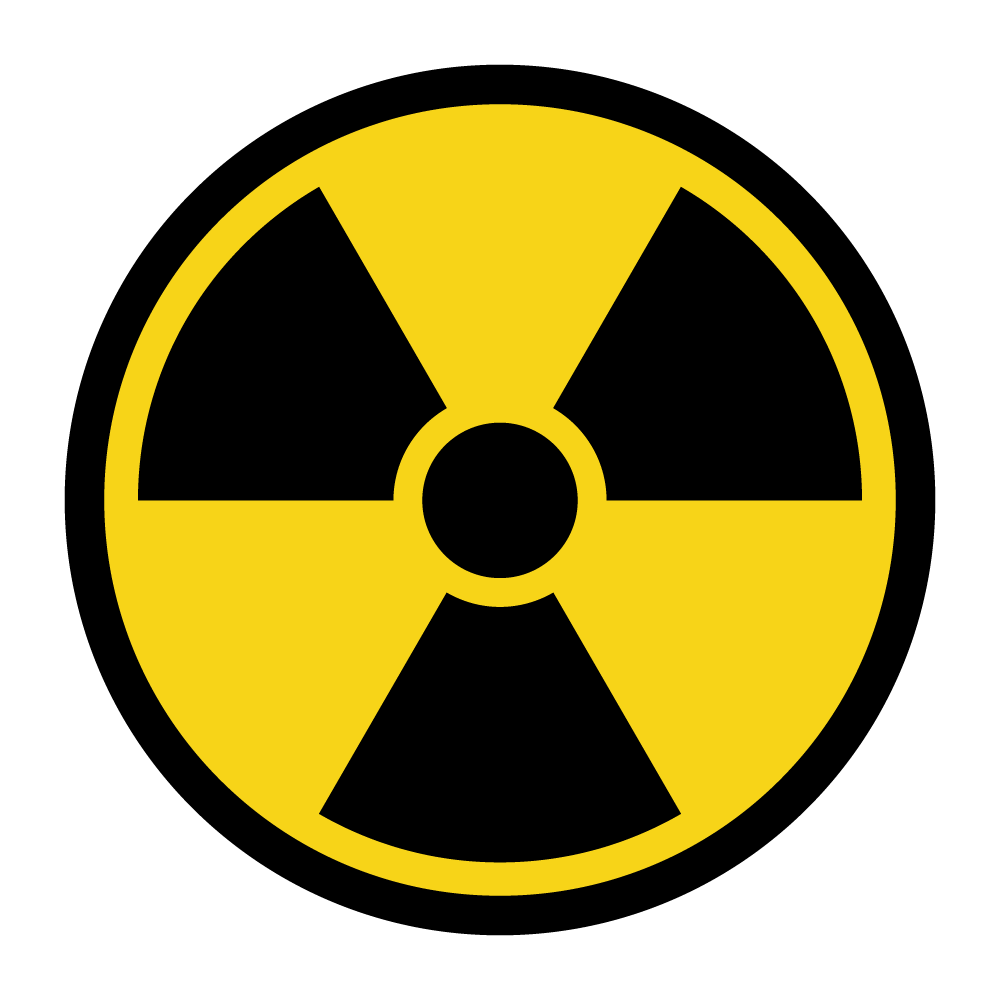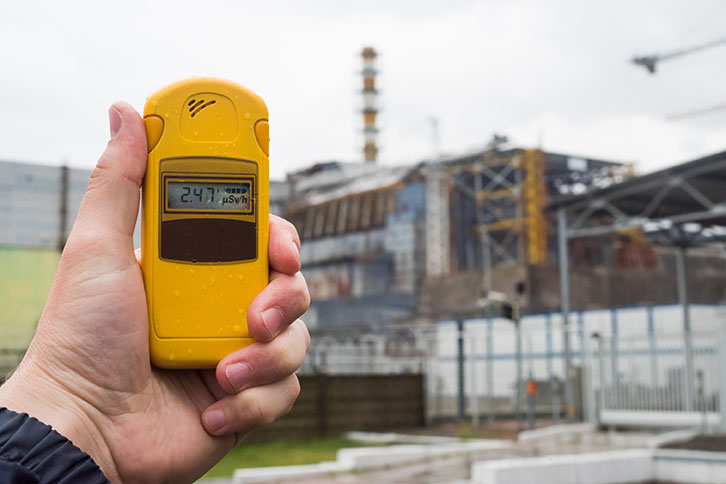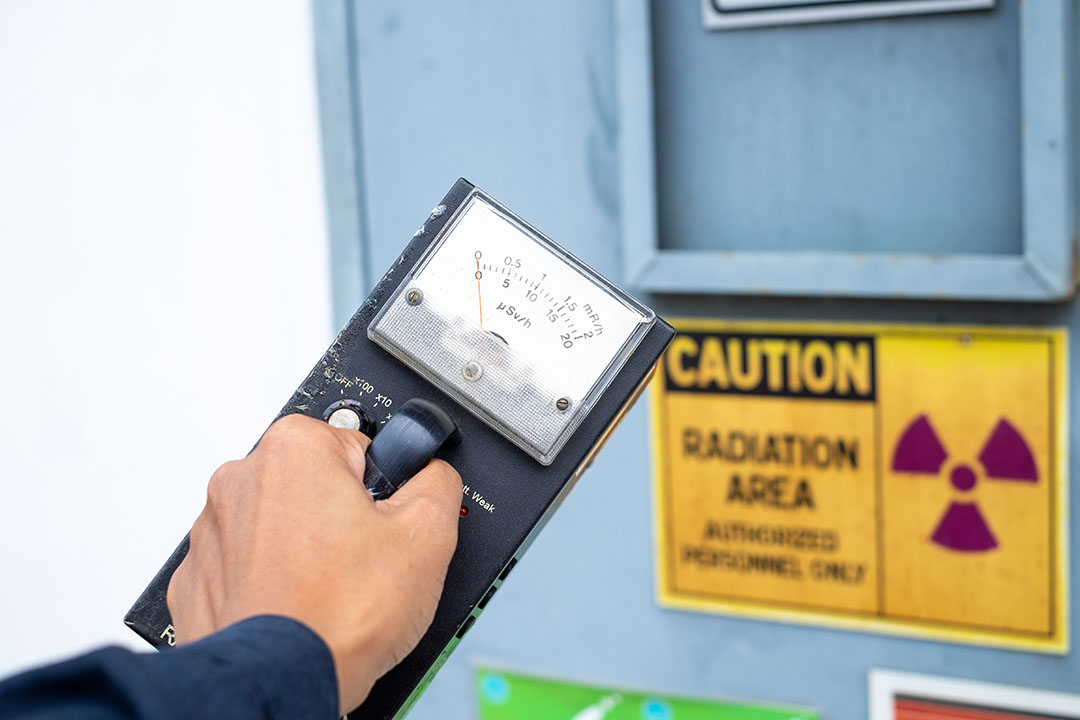When people think of radiation, they might think of large-scale disasters, environmental catastrophes or superheroes in comic books and movies. However, radiation is much more common than we realize. Low levels of background radiation exist all around us, and most of us are exposed to natural and man-made radiation every day.
Radiation has many practical uses, including food preparation, energy production, and medical research and procedures. Most radiation isn’t harmful in the doses people generally receive. However, some work environments may expose workers to higher doses of radiation. If your workplace works directly with radioactive materials or other sources of radiation, it is essential to have safeguards and precautions in place to protect your workers and your facility.
What is Radiation?
Radiation is energy released by one object that travels to and is either deflected or absorbed by another object. Radiation can exist as particles, such as alpha and beta particles, or as pure energy, such as gamma rays and X-rays.

Alpha particles have more mass than beta particles, but they can’t travel as far, have less energy and can be blocked by skin and normal clothing. Beta particles are the size of electrons but have a higher energy level than alpha particles and can do more damage to the body. However, beta particles can still be blocked by simple barriers.
Gamma rays are pure energy, can travel hundreds of feet and can penetrate human skin. X-rays consist of high-energy photons that can also penetrate human skin but are not as powerful as gamma rays and can be blocked by thin layers of lead. Because of this, X-rays are often used for medical imaging and other procedures.
Natural vs. Man-Made Radiation

The radiation in our everyday lives is known as background radiation. One of the most common sources of natural background radiation is the sun. Sunlight is a necessary type of UV radiation that humans, plants and animals need to survive. However, too much sun exposure can lead to skin damage ranging from sunburns to skin cancer.
Man-made radiation sources are also present all around us. In fact, there is still radiation in the atmosphere from atomic explosions in the 1940s and 1950s. Man-made radiation sources also include:
- Older coal power plants
- Power lines or transformers
- Smoke detectors
- Certain medical procedures and equipment
- Glow-in-the-dark dials and signs, such as “EXIT” signs in older buildings
Looking for more courses like radiation safety?
VIEW THE 800+ COURSES AVAILABLE!
Ionizing and Non-Ionizing Radiation
When a particle or photon from one atom has enough energy to take an electron from another atom, it creates a charged atom called an ion. Ions are positively or negatively charged and can change the charge of the atoms of your body’s cells. This can injure, mutate or even kill cells, and is the cause for most radiation injuries. Alpha particles, beta particles, gamma rays and X-rays are all forms of ionizing radiation.

Non-ionizing radiation includes visible light, TV and radio broadcast waves, microwaves, radio frequency waves such as cell phones, and ultraviolet light. Non-ionizing radiation is generally harmless, but overexposure can still cause injury. For example, spending too much time outside or in a tanning bed can expose you to UV radiation that can damage your skin. Working directly around high levels of microwave or radio frequency waves, such as around cell phone towers, can also result in damage.
Radiation Effects
Most people are regularly exposed to low levels of radiation without harm, but long-term or high-intensity radiation exposure can cause significant tissue damage. The Occupational Safety and Health Administration (OSHA) has an average whole-body radiation exposure limit of 5 rems per year or an average of 2.5 millirems per hour. By comparison, a standard X-ray at the dentist’s office exposes you to an average of 1.5 millirems.
However, regulatory agencies advocate for exposure levels to be “As Low as Reasonably Achievable”, or ALARA, which has three primary components:

- Shielding: The specific type of shielding barrier needed between workers and radiation sources depends on the type of radiation present in the area. Alpha particles can be blocked by intact skin or basic clothing. Beta particles can be blocked by basic barriers like wood, plastic or tarps. X-rays and gamma rays may require lead shielding.
- Distance: Chances of radiation exposure decrease the farther away workers are from a radiation source. Employers should avoid having work performed in radiation whenever possible. Work areas with radioactive materials should be marked with warning signs or personnel barriers to keep out people without proper protection or people who aren’t authorized.
- Exposure time: Naturally, if workers spend less time around radiation sources, they are exposed to less radiation. Work environments should be designed to minimize or eliminate radiation exposure. When workers must work around radioactive materials, plan work ahead of time and set up precautions so workers can finish their duties quickly.
Specific effects of radiation exposure on a person will depend on several factors, such as:
- The type and source of radiation
- How effectively the body metabolizes radiation
- Length of exposure
- How far away the radiation is
- Types of shielding available
Workplace Controls
If your employees must enter high-radiation areas or could be exposed to radiation levels above relevant regulatory limits, your workplace needs to perform radiation surveys that include the location of radioactive materials and equipment in the facility, as well as radiation measurements in those locations.
Facilities regulated by the Nuclear Regulatory Commission, or in states with specific radiation regulations, will be subject to those requirements. Generally, employees must be trained on:

- Hazards of radioactive materials in the workplace
- Precautions and protective devices
- Regulatory requirements
- Procedures to request reports of radiation exposure
All affected employees should receive radiation monitoring equipment, such as film badges/rings, pocket chambers or radiation dosimeters. Your facility must also post its radiation safety provisions where employees can access them, or your facility must make them available upon request.
Conclusion
Radiation is not generally harmful at the levels most of us experience but working around radioactive materials can cause injuries without the right precautions. When workers understand the materials they could be exposed to and how to protect themselves, they can perform their job duties safely and more effectively.
OSHA has a series of resources explaining how workers can be exposed to ionizing and non-ionizing radiation and how to protect workers from radiation hazards. SafetySkills also offers a Radiation Safety Awareness course designed to help employees recognize types and effects of radiation, identify radiation exposure hazards and workplace controls, and identify controls to prevent radiation exposure.


